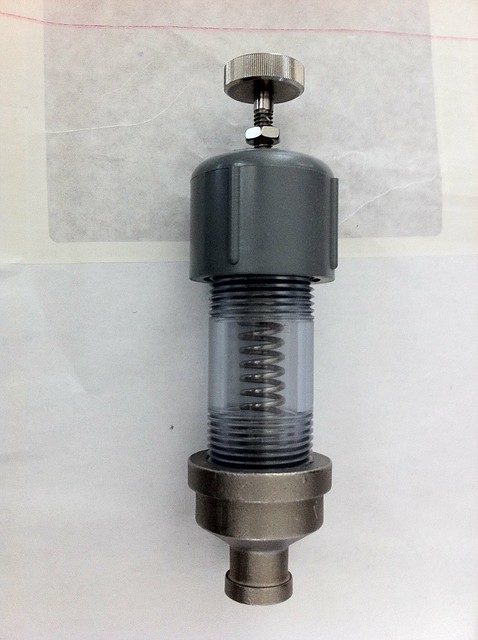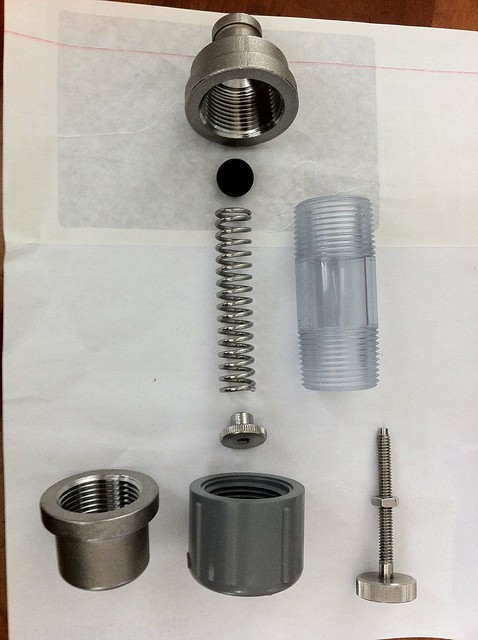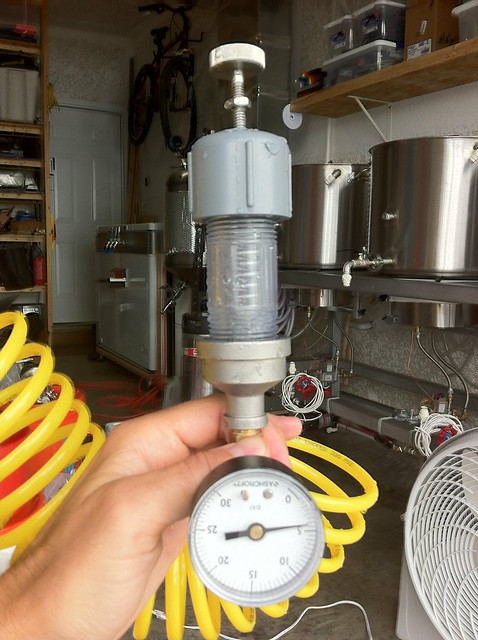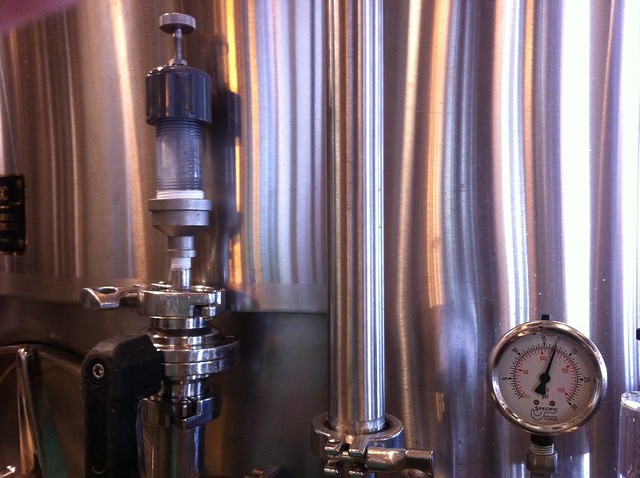Hello All,
I am a "Spunder" and have quickly come to realize the need for some kind of feedback about the pressure being released so you don't under or overshoot target pressure. When doing it with an ordinary pressure relief valve I have never been able to dial in the proper release of pressure to maintain a certain tank pressure because usually it is such a small crack of the pressure valve that is barely audible.
So I have taken inspiration from commercial spunding valve and an idea from Bobby and come up with this:

photo by brewerJP
Note that the PVC cap is a temporary cap while I test the valve - will be the stainless cap you see in the pic below. Here's the exploded view:

photo by brewerJP
And here it is in "action" - input pressure was around 15psi from my air tank:

photo by brewerJP
The idea is pressure is vented against the viton ball. The more pressure you apply to the spring, the less it will let vent. Fill the device with water and you'll see feedback from the release of pressure and you'll have a much better idea of how to adjust the relief. These types of devices are used in many commercial breweries that naturally carbonate at fermentation - which is what I do.
Only problem I'm having at the moment is the spring has a tendency to want to kink. I think this is because the ends really need to be ground and I need to make sure the tap into the cap is perfectly straight. Otherwise - it seems to be dial in really well.
I will post up a parts list after I have the kinks worked out. Just wanted to share it now!
I am a "Spunder" and have quickly come to realize the need for some kind of feedback about the pressure being released so you don't under or overshoot target pressure. When doing it with an ordinary pressure relief valve I have never been able to dial in the proper release of pressure to maintain a certain tank pressure because usually it is such a small crack of the pressure valve that is barely audible.
So I have taken inspiration from commercial spunding valve and an idea from Bobby and come up with this:

photo by brewerJP
Note that the PVC cap is a temporary cap while I test the valve - will be the stainless cap you see in the pic below. Here's the exploded view:

photo by brewerJP
And here it is in "action" - input pressure was around 15psi from my air tank:

photo by brewerJP
The idea is pressure is vented against the viton ball. The more pressure you apply to the spring, the less it will let vent. Fill the device with water and you'll see feedback from the release of pressure and you'll have a much better idea of how to adjust the relief. These types of devices are used in many commercial breweries that naturally carbonate at fermentation - which is what I do.
Only problem I'm having at the moment is the spring has a tendency to want to kink. I think this is because the ends really need to be ground and I need to make sure the tap into the cap is perfectly straight. Otherwise - it seems to be dial in really well.
I will post up a parts list after I have the kinks worked out. Just wanted to share it now!




